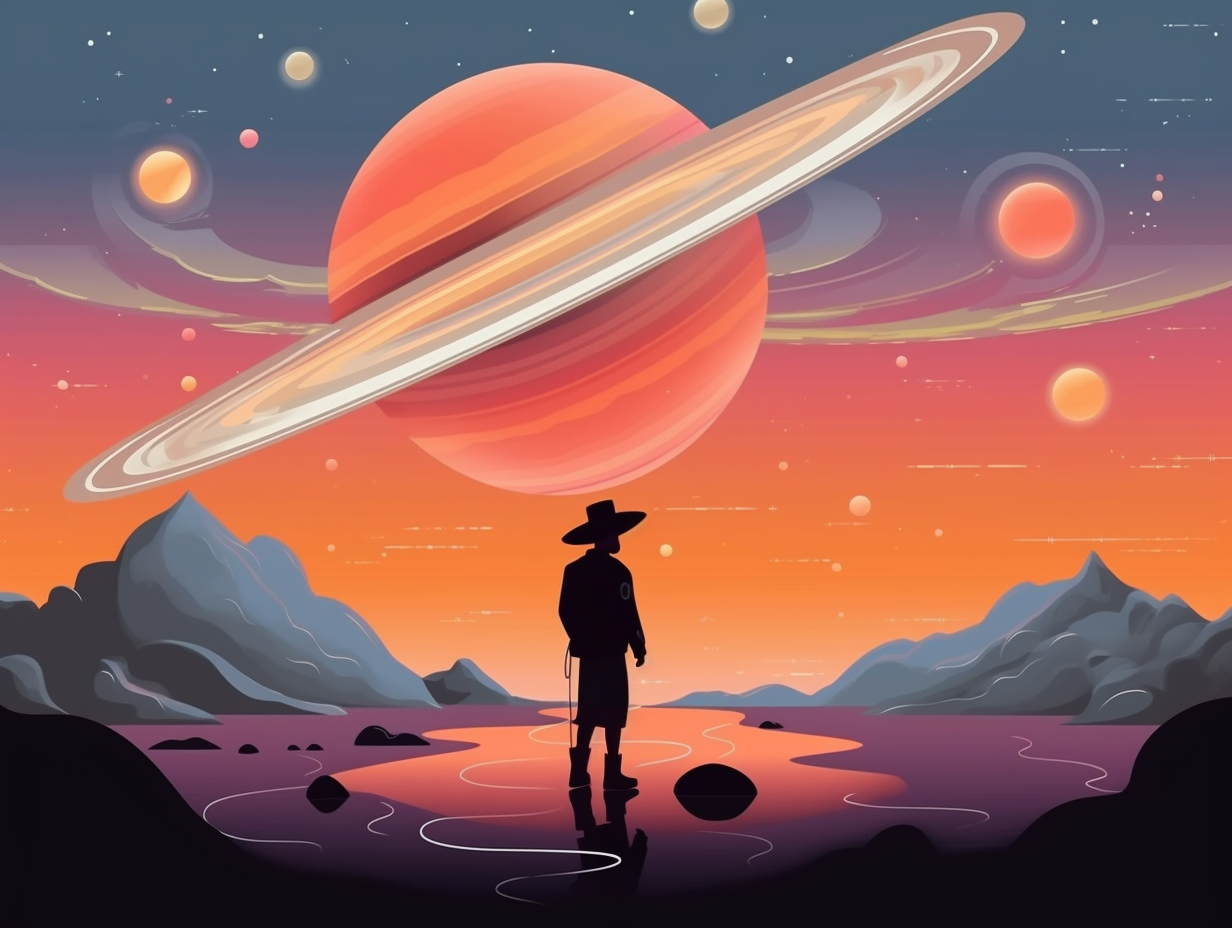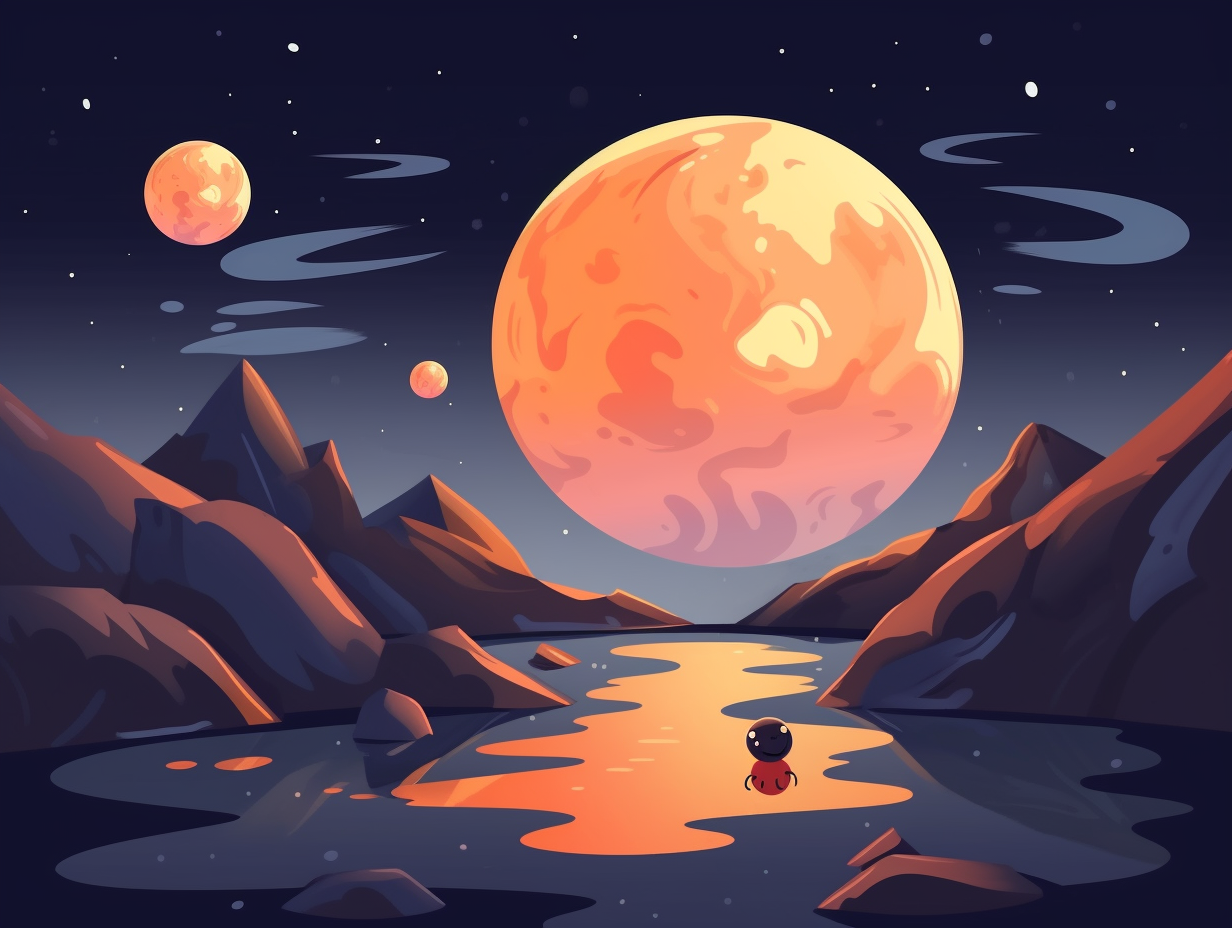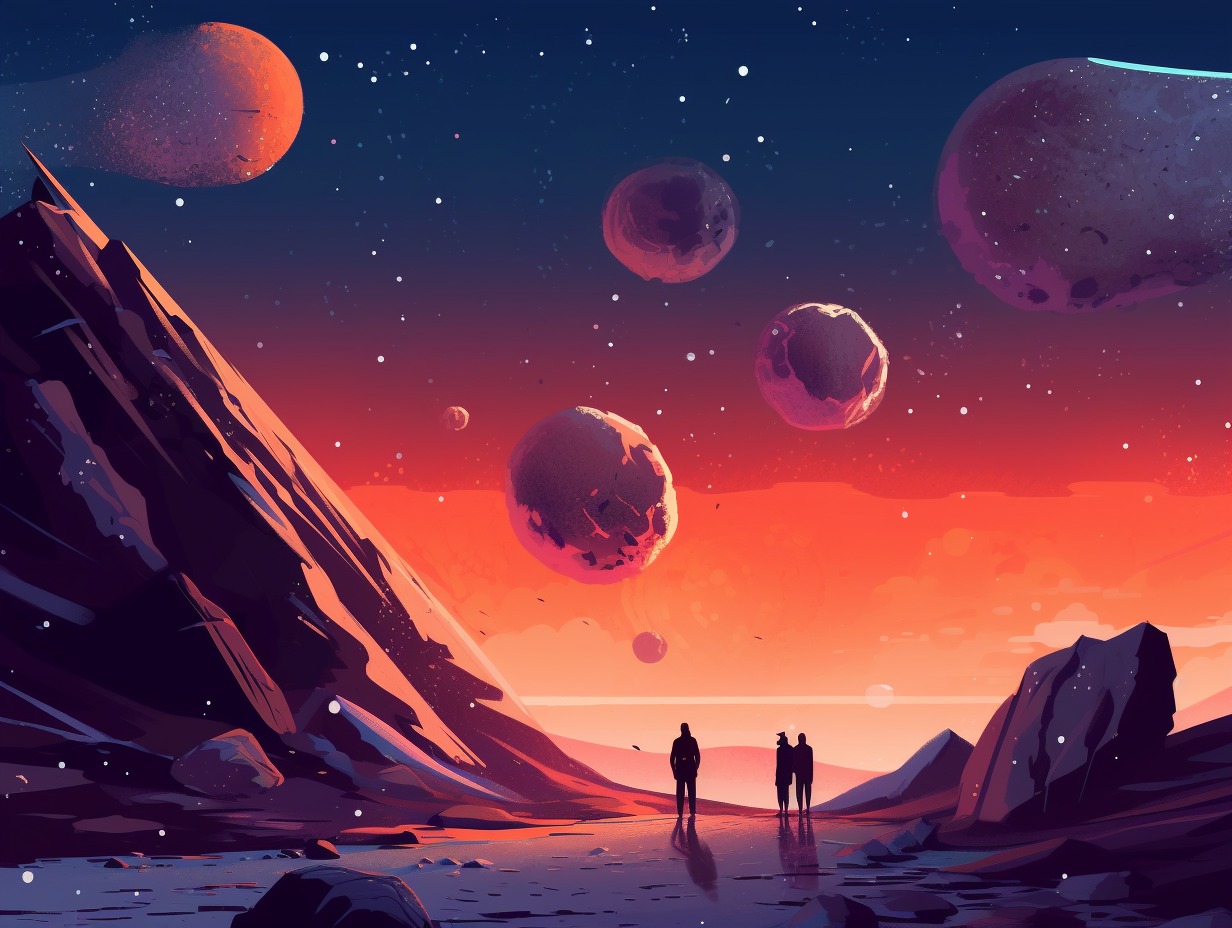Discover the Wonders of Space: Top 14 Amazing Fun Facts About Ganymede that Will Blow Your Mind!

1. Ganymede: Solar System's Largest Moon
If it ain't Ganymede, it ain't big enough: Jupiter's colossal companion, Ganymede, boasts the title of the largest moon in our Solar System, with a diameter stretching 5,270 kilometers, a mass of 1.48×10^23 kilograms, and gravity levels that even Mercury would envy – topped off with its very own oxygen-rich atmosphere.
Source => en.wikipedia.org
2. Ganymede: Cosmic Club Bouncer
Meet Ganymede, the VIP club bouncer of cosmic shenanigans: this Jupiter-aligned party moon not only holds the title of largest moon in the solar system but also flaunts a dazzling magnetic field that deflects dangerous rays and creates its own celestial light show with auroras near the poles!
Source => space.com

Did you know Jupiter can complete a full rotation in less than half an Earth day? Discover how the largest planet in our solar system races against time! 🌌⏱️
=> Fun Facts about Jupiter
3. Ganymede: Ice-Skating Party Guest of Honor
If Jupiter were to throw the mother of all ice-skating parties, Ganymede would no doubt be the guest of honor with its own magnetic moves and icy swagger: This colossal moon not only holds the title of the largest in our Solar System, but also boasts a unique magnetic field and multi-layered composition, with a speculated subsurface ocean containing more water than Earth's oceans combined.
Source => en.wikipedia.org
4. Ganymede: Deep Dive Champ
Move over, Poseidon: Ganymede has an ocean that takes deep sea diving to a whole new level, boasting enough water to make Earth's oceans seem like mere puddles. No scuba gear will save you here: Ganymede's hidden ocean, beneath an icy crust, is around 60 miles (100 kilometers) deep – a whopping 10 times deeper than Earth's oceans. Thanks to the Hubble Space Telescope's findings, we now know our universe’s depths contain the potential for liquid water, and as a bonus, maybe even life!
Source => scientificamerican.com

5. Ganymede: Ultimate Magnetic Personality
You know who's the ultimate magnetic personality with celestial aspirations, but doesn't need a witty Mercury retrograde meme to prove it? Ganymede, of course: As the only known moon in our solar system with a magnetic field and larger than the planet Mercury itself, this cosmic satellite is truly out-of-this-world in size and magnetism.
Source => en.wikipedia.org
6. Ganymede: Mercury Dethroner
Surprise, Mercury! You've been dethroned by a moon on steroids: Ganymede, the largest moon in the Solar System, boasts a diameter of 5,270 kilometers and a mass of 1.48×10²³ kg, making it bigger than the smallest planet itself.
Source => en.wikipedia.org
7. Ganymede: Charmer of Celestial Bodies
Ganymede can't help but show off its magnetic personality, being quite the charmer among the celestial bodies: This moon stands out in our Solar System as the only one with a magnetic field, a curious phenomenon believed to be caused by convection within its liquid iron core, courtesy of Jupiter's tidal forces pulling some strings.
Source => en.wikipedia.org
8. Ganymede: Groovy Cookie-Dough Terrain
If you thought your favorite cookies n' cream ice cream was out of this world, wait till you hear about this moon's deliciously groovy cookie-dough-esque terrain: Ganymede's surface comprises of 35% dark terrain with furrows stretching for thousands of kilometers, resembling arcuate fracture systems formed from the collapse of massive, ancient impacts.
Source => sciencedirect.com
9. Ganymede: Cosmic Iceberg Superpower
When Ganymede's not busy moonlighting as Jupiter's largest sidekick or posing as a potential cosmic waterpark for extraterrestrial spring-breakers: behold its secret superpower – a magnetic field that not only dances with auroral lights at its poles, but also sparks the possibility of life on this vast, celestial iceberg.
Source => en.wikipedia.org

10. Ganymede: Magnetic Tango with Jupiter
Who turned Jupiter's magnets on? The magnetic tango between Jupiter and its largest moon, Ganymede, is causing a cosmic jazz club vibe: Auroras light up Ganymede's sky due to the interaction of their magnetospheres, which accelerates plasma, creating stunning displays at the moon's poles and even causing plasma rain to fall on its icy surface.
Source => spaceflightinsider.com
11. Ganymede: Top Hat Magnetism
Who needs Mercury when you've got a moon with more magnetism than a top hat filled with rabbits? Ganymede is quite the charmer: In fact, it's the only moon in our solar system that boasts its very own magnetic field, which is even stronger than Mercury's, constantly shedding and refreshing its particles in a celestial dance.
Source => space.com
12. Ganymede: Blockbuster Moon Sequel
If the moon were a blockbuster movie, Ganymede would be the ultimate sequel with an outrageous budget and ever-fascinating plot twists: It's the largest moon in the solar system, boasting a magnetic field produced by a liquid iron core, a captivating topography of contrasting dark and light areas, and compelling parallel bright ridges likely spawned by a brief and rare plate tectonic fiasco.
Source => astronomynotes.com
13. Ganymede: Geological Soap Opera
If awkward family gatherings were moons, they'd definitely be Ganymede's Galileo Regio: a fascinating mix of old craters and intersecting furrows that suggest extensive history and the probability of massive ancient impacts. Hidden beneath the frosty veneer of Jupiter's largest moon, Galileo Regio is a geological soap opera that's all about erosion and revealing the frosty underbelly of cosmic family drama.
Source => lpi.usra.edu
14. Ganymede: Aquaman's Rival
Step aside, Aquaman – there's a new king of the oceans, and it ain't even on Earth: Ganymede, Jupiter's largest moon, boasts a subsurface ocean beneath its 60-mile-thick icy crust, containing more water than all of Earth's oceans combined, and its auroras reveal the moon's interaction with Jupiter's magnetic field!
Source => space.com
Related Fun Facts




















